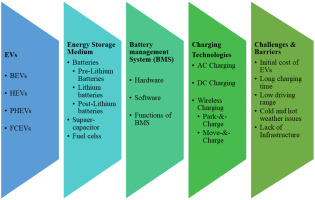

**Tesla Battery Longevity Without Charging: Insights on Duration and Influencing Factors**
Tesla automobiles are celebrated for their innovative electric powertrains and impressive range. A frequently posed inquiry among Tesla enthusiasts and potential purchasers is: what is the lifespan of a Tesla battery when left unchecked for charging? Grasping the duration a Tesla battery can endure without charging is vital for storage considerations, journey planning, and long-term upkeep of the vehicle. This piece examines how long a Tesla battery may last without charging and the primary elements that affect battery discharge during times of inactivity.
—
### Grasping the Essentials of Tesla Batteries
Tesla automobiles utilize lithium-ion battery packs, recognized for their substantial energy density and comparatively extensive lifespan. These batteries are crafted to hold charge effectively, yet, similar to all batteries, they naturally deplete energy over time—even when idle. This gradual energy loss is commonly known as “vampire drain” or “phantom drain.”
—
### Duration of Tesla Battery Without Charging
The specific length of time a Tesla battery can persist without electrical replenishment hinges on various factors, but typically:
– **Tesla cars can remain stationary for 20 to 60 days without charging** before the battery is entirely drained, assuming it was nearly full when parked.
– **Vampire drain usually fluctuates between 1% to 3% daily**, depending on configurations, environmental elements, and software behavior.
For instance, if a Tesla Model 3 boasts a full battery (around 75 kWh) and undergoes a 1% daily drain, it would lose approximately 0.75 kWh each day. Thus, it might theoretically remain unused for over 60 days before the battery is fully depleted. However, Tesla advises against allowing the battery to reach complete depletion, as this could harm the battery and influence its long-term functionality.
—
### Primary Elements Influencing Battery Drain
Numerous aspects determine how swiftly a Tesla battery’s charge diminishes when not in operation:
#### 1. **Battery Charge Level at Parking**
The greater the charge level at which the vehicle is parked, the longer it can endure without charging. Tesla recommends maintaining the battery between 50% and 90% for optimal preservation during storage.
#### 2. **Surrounding Temperature**
Extreme temperatures can hasten battery drain. Cold conditions may diminish battery performance, whereas high temperatures could heighten passive energy loss. Tesla vehicles feature thermal management systems that might activate to regulate battery temperature, consuming extra energy.
#### 3. **Software and Connectivity Functions**
Tesla vehicles maintain a semi-active state even when parked. Functions like Sentry Mode, Smart Summon Standby, and frequent app interactions can markedly elevate vampire drain.
– **Sentry Mode**: This security function employs cameras and sensors to oversee surroundings. It can draw 200–300 watts per hour, translating to 4–6 kWh per day.
– **Frequent App Interactions**: Regularly accessing the Tesla app can awaken the car from sleep mode, boosting energy consumption.
#### 4. **Vehicle Model and Battery Capacity**
Different Tesla models possess varying battery capacities and energy management systems. For example:
– **Model S and Model X**: Their larger battery packs (up to 100 kWh) permit longer idle periods.
– **Model 3 and Model Y**: Their smaller battery packs (50–75 kWh) may deplete more rapidly under the same circumstances.
#### 5. **Software Version and Improvements**
Tesla routinely issues software updates that can enhance or modify energy consumption patterns. Certain updates bolster sleep mode efficiency, curbing vampire drain.
—
### Optimal Strategies for Reducing Battery Drain
To enhance the time your Tesla can remain without charging, consider the following recommendations:
– **Deactivate Sentry Mode** if the vehicle is left in a secure area.
– **Limit app interactions** to prevent unnecessarily waking the car.
– **Activate Energy Saving Mode** (available on select models) to lessen background activities.
– **Park in a climate-controlled space** to diminish temperature-induced drain.
– **Charge to around 50–70%** if planning to store the vehicle for an extended duration.
– **Periodic checks** through the Tesla app to monitor battery status and health.
—
### Consequences of Complete Battery Depletion
Permitting a Tesla battery to fully discharge can result in several complications:
– **Irreversible battery damage**: Deep discharge can diminish battery capacity and longevity.
– **Access issues**: A completely drained battery might obstruct access to the car.
– **Towing may be necessary**: If the battery is fully exhausted, the vehicle may require towing to a charging facility.
Tesla strongly discourages allowing the battery to hit 0%, especially for prolonged storage.
—
### Summary
While Tesla batteries are designed for durability and efficiency, they are not exempt from energy loss during idle periods. Generally, a Tesla can persist between 20 to 60 days without charging, influenced by usage settings, environmental factors, and battery capacity. By comprehending the elements






